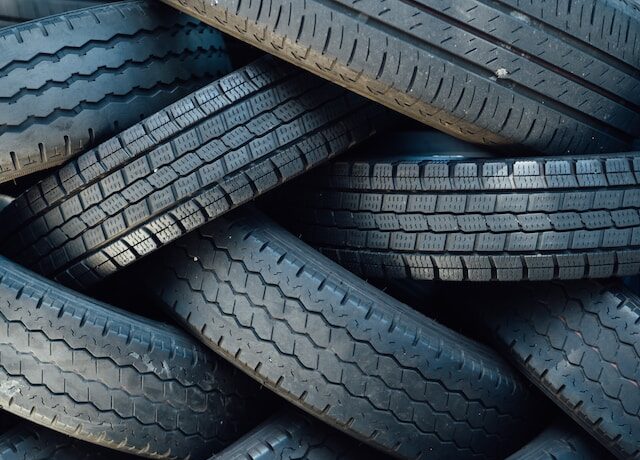Consider yourself on the road, taking in the fresh air and the wide open spaces. You notice a loud thumping sound coming from your car all of a sudden. When you stop, you discover that one of your tyres is completely flat. It will not only cause you inconvenience, but it will also be expensive to replace.
But supposing there was a method to save money by avoiding these pricey repairs? Enter the Tyre Pressure Monitor, a practical tool that assists in maintaining ideal tyre pressure and extends the life of your tyres. We’ll go over what a tyre pressure monitor is in detail, how to check your tyres’ pressure, and why utilising one may ultimately save you time, money, and irritation in this blog post. So grab your seatbelts, and let’s go!

A tyre pressure monitor: what is it?
A TPMS, or tyre pressure monitor, is a tool that continuously checks the pressure in your tyres. It gives you up-to-date information on the pressure levels and notifies you if they go above or below the advised range. This tiny device may be fitted into the dashboard of your car or attached directly to the stems of your tyres.
A Tyre Pressure Monitor’s main purpose is to support you in maintaining proper tyre inflation. Why is this crucial? In other words, underinflated tyres may deteriorate unevenly and more quickly. Conversely, tyres that are overinflated have less traction on the road and are more prone to blowouts.
You can easily keep track of your tyre pressure without having to manually check it every time you drive if you have a Tyre Pressure Monitor at your disposal. Typically, the monitor shows readings for each individual tyre so you can spot any problems right away.
Maintaining optimum tyre pressure not only increases road safety, but it also increases fuel efficiency. When your tyres are inflated correctly, they roll more smoothly and use less of your engine’s power. You save money at the pump as a result while lowering hazardous pollutants.
Purchasing a tyre pressure monitor is like having an additional pair of eyes to keep a watch on your tyres all the time. It eliminates any uncertainty and guarantees that you are driving for maximum durability and performance.
How to check the pressure in your tyres?
Regular tyre pressure checks are a crucial aspect of maintenance to guarantee the durability and effectiveness of your tyres. Here is a quick guide on how to check the pressure in your tyres.
You will first need a trustworthy and precise tyre pressure gauge. These are available online or at the majority of auto supply retailers. Start by taking off one of your tyres’ valve caps.
Then, until you hear a hissing sound, press the gauge firmly on the valve stem. This shows that the reading you got was accurate. As they could have varying air pressure levels, be sure to carry out this procedure on all four tyres.
Once the readings have been acquired, compare them to the recommended tyre pressure listed in your vehicle’s manual or on a sticker inside the driver’s door jamb. It is essential to abide by these guidelines because improper tyre inflation can result in poor handling, decreased fuel efficiency, and greater wear and tear.
Use an inflation tool, such as an air compressor, or go to a nearby service station where professionals can help you inflate or deflate your tyres appropriately if any modifications are required.
Keep in mind that routine inspections should be carried out every month or before lengthy excursions when tyres may heat up from prolonged driving. Your tyres’ lifespan will be extended and you’ll spend less money on future expensive repairs if you keep the right air pressure levels in them.
Why you should use a tyre pressure monitor?
The ability to prevent future expensive repairs is one of the main advantages of having a tyre pressure monitor. Tyre pressure may be continuously monitored to guarantee that your tyres are always adequately inflated, lowering the possibility of damage and wear.
Your tyres will often wear down more quickly and unevenly if they are underinflated. This can result in lessened traction on the road and decreased fuel efficiency. On the other side, underinflated tyres can also be an issue because they might cause poor handling and a higher risk of punctures.
You can simply monitor the pressure levels at all times by installing a tyre pressure monitor on your car. This enables you to take preventative action before any serious problems develop, such as inflating or deflating your tyres as necessary.
Increased road safety is a benefit of utilising a tyre pressure monitor. When driving, properly inflated tyres give you more traction and control, especially in emergency situations or bad weather. This improves overall driving performance while lowering the chance of accidents brought on by tire-related problems.

Better fuel economy is also a result of maintaining proper tyre pressure through routine monitoring. Your tyres will glide more smoothly along the road surface when they are properly inflated because there is less rolling resistance. As a result, you’ll get greater miles per gallon and eventually spend less on petrol.
In conclusion, employing a tyre pressure monitor has a number of important advantages, such as lowering repair costs, raising driving safety, and boosting fuel efficiency.
You may increase the lifespan of your tyres, enjoy smoother rides, and prevent unforeseen expenses by being diligent about maintaining optimum tyre pressure with this useful tool.
Why then wait? Invest in a tyre pressure monitor right away to drive with confidence!





